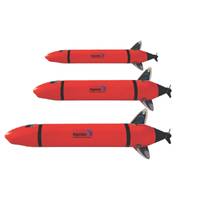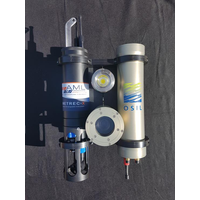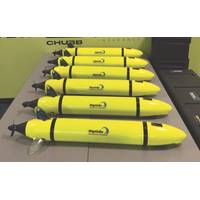
Taking UUVs Faster, Further & Deeper
rechargeable battery pack that doubles the energy capacity (and endurance) of the standard vehicle. Additionally, its standard alkaline battery stack was designed to accommodate multiple battery chemistries, including lithium primary and nickel-metal-hydride cells. With lithium primary cells, the standard micro-UUV can operate for over a week at speed.Through an exclusive partnership with L-3-Open Water Power the micro-UUV will pioneer the use of aluminum seawater batteries. This new technology harnesses the energy of a chemical reaction between seawater and specially developed, high-purity aluminum

OSIL Debuts Deep Sea Camera System
battery pack which can be programed at the surface to turn the camera on and off at specific depths, preventing users from having to record and review hours of wasted footage, and can also independently or concurrently activate any instrumentation that is connected to it.Data is recorded onto a standard Micro SD memory card. Several hours of video footage can be built up over repeated deployments depending on the camera resolution settings and memory card used. Larger power packs are available for extended deployments. Recharging and data transfer takes place via an external connector.The self-contained

UUV Manufacturer Aims Big by Going Small
Fleet and wider UUV user community. While the current micro-UUV capabilities are exciting it is the potential to dramatically expand their range and endurance, without increasing size, which will truly disrupt the UUV market. Currently 144 alkaline AA batteries are used in a standard micro-UUV. This provides approximately 300 Wh which, with no payload, running at peak efficiency gives the micro-UUV a range of a little more than 100 nautical miles in 36 hours. This presumes an operating speed of 2.8 knots. At 0.5 knots the same vehicle configuration can run for three days. With



 February 2024
February 2024





